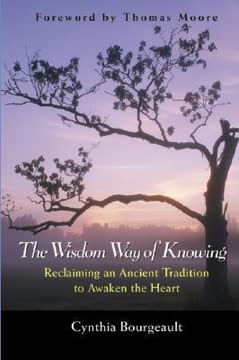Key Takeaways
1. Wisdom is a State-Dependent Way of Knowing
"As one's level of being increases, receptivity to higher meaning increases. As one's being decreases, the old meanings return."
Beyond intellect. Wisdom isn't just about accumulating knowledge; it's a way of perceiving that requires a specific state of being. It's not enough to simply understand concepts intellectually; one must embody them. This means that our capacity to grasp deeper truths is directly linked to our inner state.
Level of being. The book uses the metaphor of Peter walking on water to illustrate this point. When Peter's heart was focused on Jesus, he could transcend the laws of physics. But when fear took over, he sank. This highlights that our level of being—our inner state of balance and awareness—determines our ability to access wisdom.
- Higher being = higher receptivity
- Lower being = return to old meanings
Holistic approach. Wisdom requires the integration of mind, body, and heart. It's not solely a mental exercise but a holistic transformation that involves our entire being. This is why practices like meditation, physical work, and sacred chanting are essential components of the Wisdom path.
2. The West Lost Its Wisdom Through Doctrinal Shifts
"God became man in order that man might become God."
Shifting focus. The Christian West gradually lost its grasp on the Wisdom tradition by shifting its focus from direct, participative knowing to vicarious knowledge mediated through doctrine. The early church emphasized personal transformation and direct experience of the divine, but over time, this was replaced by a focus on believing the right things about Jesus.
Original Sin. The doctrine of Original Sin, solidified by Augustine, further cemented this shift. It posited that human nature is inherently corrupt, making personal transformation impossible without divine intervention. This undermined the idea of theosis—the divinization of the human person—which was central to the early Christian understanding of the spiritual journey.
- Emphasis on belief over experience
- Loss of the vision of theosis
Underground stream. As a result, the Wisdom tradition went underground in the West, preserved in esoteric circles and monastic communities. While the practices were maintained, the cosmological understanding that gave them meaning was largely lost. This led to a disconnect between the practical tools of transformation and the deeper vision of human purpose.
3. Three Centers of Knowing: Mind, Body, and Heart
"We have subtle subconscious faculties we are not using."
Three-centered being. The Wisdom tradition views the human being as a three-centered entity: the intellectual center (mind), the moving center (body), and the emotional center (heart). Each center has its own unique intelligence and perceptive gifts, and true wisdom requires the harmonious integration of all three.
Moving center. The moving center, encompassing both instinct and physical movement, is crucial for understanding the language of faith encoded in sacred gesture. Rhythmic labor and sacred movement help us reconnect with our bodies and access deeper levels of awareness.
- Instinctive center: inner operational systems
- Moving center: outward interactions with the physical world
Emotional center. The emotional center, often confused with personal feelings, is actually an organ for perceiving divine purpose and beauty. It's not about expressing personal emotions but about attuning ourselves to the subtle energies of the divine. The heart, when purified, can comprehend paradox and connect us to the cosmic mind.
4. Human Purpose: Manifesting Divine Qualities
"Might it not be that the reason for existence has no explanation in the usual sense?"
Beyond rational explanation. The purpose of human existence cannot be fully grasped through rational thought alone. The universe is not a random assortment of parts but a divine hologram reflecting a unifying intelligence. Our role is to participate in this divine dance by manifesting the qualities of the divine.
Energetic continuum. There is an energetic continuum running through all of creation, from pure consciousness to the physical world. We humans occupy a unique position in this continuum, capable of transforming subtle energies into physical form and vice versa.
- Consciousness/Spirit
- Psychic Force
- Physical Energy/Matter
Reciprocal feeding. We are not just passive recipients of divine energy but active participants in a process of reciprocal feeding. By embodying qualities like love, compassion, and truth, we provide vital nourishment for the physical world. Our actions, whether conscious or unconscious, have a direct impact on the energetic balance of the cosmos.
5. Transformation: The Alchemy of Surrender
"Blessed is that lion whom the man devours, for that lion shall become man. But cursed is the man whom the lion devours, for that man shall become lion."
Inner alchemy. Transformation is not about escaping the physical world but about engaging with it in a way that reveals the inner qualities of aliveness. It's a process of sacred alchemy, where we surrender our outer forms to release the divine energy within.
Dying to the lesser self. The journey of transformation requires a willingness to "die" to our lesser self—the egoic identity that clings to personal desires and agendas. This is not a literal death but an inner surrender that allows our true self to emerge.
- Sacrifice = "make holy" or "make whole"
- Releasing inner aliveness
Reciprocal feeding. This act of surrender releases psychic force, a vital nutrient for the building up of the planetary body and our human kinship. The soul energy released in this sacrifice reveals the name of God we truly bear, making it available as a fragrance and nutrient to help the work of others.
6. Freedom is Found Through Surrender, Not Choice
"Being free to be one's personality is not freedom."
Two kinds of freedom. The modern Western worldview equates freedom with choice—the ability to do what we want. But the Wisdom tradition offers a different understanding: true freedom is found through surrender, not choice. It's about aligning ourselves with our true nature and the divine will.
Spontaneity freedom. True freedom is not about maximizing our options but about being able to act spontaneously from our center. It's about being free from the manipulations of the lower self and being guided by the wisdom of the heart.
- Choice freedom: doing what we want
- Spontaneity freedom: acting from our center
Personhood. The ultimate fruit of transformation is the shift from being an individual to becoming a person—one through whom Greater Life resounds. This is not about losing our uniqueness but about finding our true place within the larger cosmic dance.
7. The Heart Sees Beyond the Mind's Limitations
"Blessed are the pure in heart, for they shall see God."
Objective seeing. The heart, when purified, is capable of objective seeing—a way of perceiving that goes beyond the limitations of the rational mind. It's not about detachment but about deep participation, where we become one with what we are seeing.
Imaginal realm. The heart is our instrument for accessing the imaginal realm, where divine qualities take form. It's a realm of patterns, symbols, and archetypes that can be perceived through the awakened heart.
- Heart = organ of perception
- Imaginal = realm of qualities
Conscience. The ultimate expression of heart-seeing is conscience—the ability to see the divine hologram in any situation and to act spontaneously in alignment with that wholeness. It's not about following rules but about responding to the inner guidance of the heart.
8. Tools for Awakening: Presence, Practice, and Surrender
"Awakening the heart, or the spiritualized mind, is an unlimited process of making the mind more sensitive, focused, energized, subtle and refined, of joining it to its cosmic milieu, the infinity of love."
Spiritualized mind. Awakening the heart begins with spiritualizing the mind—making it more focused, sensitive, and attuned to the divine. This involves practices that cultivate attention, balance, and surrender.
Core practices:
- Presence: Cultivating three-centered awareness in daily life
- Meditation: Quieting the mind and accessing deeper levels of consciousness
- Sacred chanting: Vibrating the heart with divine love and adoration
- Lectio divina: Training the visionary imagination through sacred reading
- Surrender: Letting go of the smaller self and aligning with the divine will
Inner yes. The journey of awakening is not about following a rigid program but about cultivating an inner "yes"—a willingness to open our hearts and allow the divine to guide us. It's a process of continuous learning and growth, where we gradually become more attuned to the subtle energies of the cosmos.
Last updated:
FAQ
What is "The Wisdom Way of Knowing" by Cynthia Bourgeault about?
- Explores the Wisdom Tradition: The book introduces readers to the ancient Wisdom tradition, a lineage of spiritual knowledge and practice that predates and underlies all major world religions.
- Focus on Spiritual Transformation: Bourgeault presents Wisdom as a precise science of spiritual transformation, involving both a cosmological vision and practical training.
- Bridges Ancient and Modern: The author demonstrates how this tradition offers missing pieces to contemporary Western spirituality, reconciling science, religion, and personal meaning.
- Practical Application: The book is both theoretical and practical, offering tools and practices for awakening the heart and living with greater depth and purpose.
Why should I read "The Wisdom Way of Knowing" by Cynthia Bourgeault?
- Recover Lost Spiritual Depth: The book addresses the spiritual malaise and lack of depth in modern Western culture, offering a path to greater meaning and coherence.
- Accessible Wisdom Practices: Bourgeault provides practical tools—such as meditation, sacred chanting, and lectio divina—that can be integrated into daily life, regardless of religious background.
- Interfaith and Inclusive: The Wisdom tradition is presented as a universal path, not limited to Christianity, making it relevant for seekers from any or no religious tradition.
- Guidance for Transformation: Readers seeking personal transformation, spiritual intelligence, and a deeper sense of purpose will find actionable guidance and inspiration.
What are the key takeaways from "The Wisdom Way of Knowing" by Cynthia Bourgeault?
- Three-Centered Knowing: True wisdom involves the integration of mind, heart, and body, not just intellectual understanding.
- Participative Spirituality: Wisdom is state-dependent and requires presence, receptivity, and a willingness to be transformed, not just belief or intellectual assent.
- Human Purpose and Transformation: Humans play a vital role in manifesting divine qualities in the world, acting as midwives of the Spirit through conscious transformation.
- Surrender and Freedom: Genuine freedom and personhood arise from surrendering the small self (ego) to the greater self, aligning with the divine purpose.
How does Cynthia Bourgeault define "Wisdom" in "The Wisdom Way of Knowing"?
- Not Mere Knowledge: Wisdom is not just accumulated knowledge, life experience, or intellectual understanding.
- Science of Transformation: It is a comprehensive science of spiritual transformation, including both a cosmological vision and practical methods for personal growth.
- Participative and Experiential: Wisdom requires a participative, state-dependent way of knowing that engages the whole person—mind, heart, and body.
- Universal Tradition: The Wisdom tradition is the common ground at the headwaters of all major religions, though often hidden or fragmented in modern times.
What is "three-centered knowing" in "The Wisdom Way of Knowing" by Cynthia Bourgeault?
- Mind, Heart, and Body: Three-centered knowing means integrating the intellectual (mind), emotional (heart), and moving/instinctive (body) centers.
- Balanced Awareness: Wisdom arises when all three centers are harmonized and present, allowing for deeper perception and understanding.
- Practical Exercises: Practices like meditation, sacred movement, and mindful work are used to awaken and balance these centers.
- State of Presence: Only in this balanced state can one access higher meaning and true spiritual insight.
How does "The Wisdom Way of Knowing" by Cynthia Bourgeault explain the loss and recovery of Wisdom in the Christian West?
- Historical Amnesia: The Christian West lost touch with its Wisdom roots through doctrinal controversies and an overemphasis on belief and intellectual assent.
- Shift from Direct Experience: Early Christianity emphasized participative knowing and transformation, but this was replaced by creeds and dogma.
- Desert Fathers and Monasticism: The Wisdom tradition survived in mystical and monastic circles, especially through practices like ora et labora and lectio divina.
- Modern Recovery: The book highlights the resurgence of Wisdom through figures like G.I. Gurdjieff and contemporary teachers, as well as interfaith dialogue.
What is the role of "surrender" and "freedom" in spiritual transformation according to "The Wisdom Way of Knowing"?
- Surrender as Letting Go: True transformation requires surrendering the ego or small self, allowing the greater self to emerge.
- Freedom Redefined: Real freedom is not about unlimited choices but about spontaneity and alignment with one's deepest center and divine purpose.
- Paradox of Sacrifice: The process involves a kind of dying to the old self, which paradoxically leads to greater wholeness and personhood.
- Practical Surrender: Everyday situations, not just dramatic moments, are opportunities to practice inner surrender and openness.
How does "The Wisdom Way of Knowing" by Cynthia Bourgeault describe the human purpose in the cosmos?
- Midwives of the Spirit: Humans are called to manifest and release the divine qualities (names of God) into the world through conscious action.
- Reciprocal Feeding: There is a symbiotic relationship between the visible and invisible realms; our actions and qualities feed the world energetically.
- Unique Contribution: Each person bears a unique "name of God" or quality, contributing to the greater whole like a string in a cosmic concert.
- Responsibility and Accountability: Our choices and the quality of our being have real consequences for the planet and the unfolding of divine purpose.
What practical tools and methods does "The Wisdom Way of Knowing" by Cynthia Bourgeault recommend for awakening the heart?
- Three-Centered Presence: Regularly practice bringing mind, heart, and body into balance through mindful awareness.
- Meditation and Centering Prayer: Use meditation to quiet the mind and access deeper states of being.
- Sacred Chanting: Engage in chanting to awaken the emotional center and connect with the divine through sound.
- Lectio Divina: Practice sacred reading to train the imagination and open to visionary seeing.
- Surrender Practice: Cultivate an attitude of inner yielding and openness in daily life, especially in challenging situations.
How does "The Wisdom Way of Knowing" by Cynthia Bourgeault approach the concept of "seeing with the eye of the heart"?
- Heart as Organ of Perception: The heart is not just the seat of emotions but an organ for perceiving divine purpose and beauty.
- Objective Seeing: True seeing involves participating so deeply that the ego disappears, allowing direct perception of the divine pattern.
- Purification of the Heart: Practices focus on stilling the mind and emotions, freeing the heart from egoic passions to reflect the divine hologram.
- Creative Perception: The awakened heart participates in the ongoing creation and transformation of the world, acting as a channel for divine intelligence.
What are the main influences and sources referenced in "The Wisdom Way of Knowing" by Cynthia Bourgeault?
- Christian Mysticism: Draws from the teachings of Jesus, the Desert Fathers and Mothers, Benedictine monasticism, and Christian mystics like Meister Eckhart and Jacob Boehme.
- Sufism and Islamic Mysticism: Incorporates insights from Sufi masters like Rumi and Ibn al-'Arabi, emphasizing the imaginal world and transformation.
- Gurdjieff and the Fourth Way: Modern recovery of Wisdom is influenced by G.I. Gurdjieff's teachings on three-centered knowing and spiritual work.
- Interfaith and Scientific Dialogue: Engages with contemporary science (quantum physics), other religious traditions, and modern spiritual teachers.
What are some of the best quotes from "The Wisdom Way of Knowing" by Cynthia Bourgeault, and what do they mean?
- "As one's level of being increases, receptivity to higher meaning increases. As one's being decreases, the old meanings return." – Maurice Nicoll. This highlights the state-dependent nature of Wisdom; transformation is required for deeper understanding.
- "How you get there is where you'll arrive." – Emphasizes that the process and the state of being are inseparable in spiritual work.
- "Please come home. Please come home into your own body, your own vessel, your own earth." – Jane Hooper. This poem, quoted in the book, encapsulates the call to presence and embodiment as the foundation for Wisdom.
- "You are the mirror in which God sees himself." – Sufi teaching. This expresses the idea that human beings reflect and manifest the divine qualities in the world.
- "The heart is not for personal expression but for divine perception." – Bourgeault. This redefines the heart's role as an organ of spiritual insight, not just emotion.
Review Summary
The Wisdom Way of Knowing receives mostly positive reviews, with readers praising its insights on spirituality, wisdom traditions, and contemplative practices. Many find it enlightening and transformative, appreciating Bourgeault's blend of historical context, practical advice, and diverse spiritual perspectives. Some readers note the book's focus on Christian wisdom while incorporating elements from other traditions. A few reviewers found certain concepts challenging to grasp or felt the book lacked depth in some areas. Overall, readers value the book for its guidance on developing a deeper, more holistic approach to spirituality and self-knowledge.
Similar Books
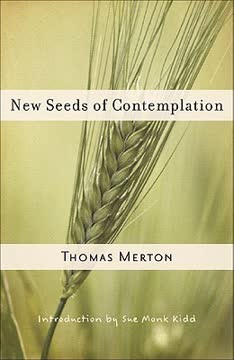
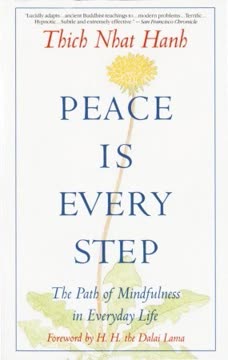
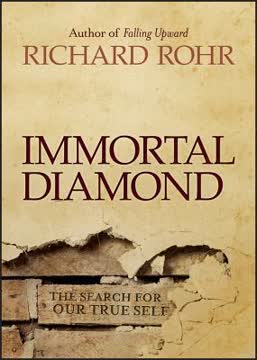
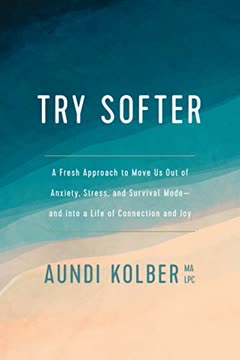
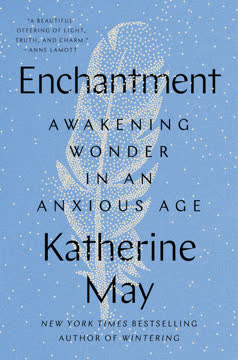
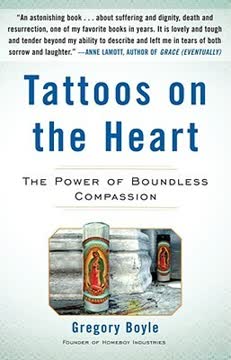
Download PDF
Download EPUB
.epub digital book format is ideal for reading ebooks on phones, tablets, and e-readers.
